It is on that journey to the deeper level — through anger, hurt, frustration, resentment, despair, hope (and much more) — that we can reach a deeper possibility of supporting the parties in dealing effectively and meaningfully with their conflict,if they are motivated and willing to do so. The challenge of the “if” has been addressed throughout the journey (of the first five underling principles); and the possibility of the parties going under the conflict together with the mediator continues here.
Schematically, we represent the journey of going under the conflict in terms of a “V.”
These different emotions and attitudes underlie conflict as we view it. Conflict can deny our connection to one another and deny ourselves in the process. The caucus model accepts (and, in doing so, also affirms) that denial. We see conflict as too often denying the human connection between us and in the process denying ourselves. The frustration, anger, and pain that underlie the conflict and mark the relation between the parties is often limiting. Where some approaches simply accept that as reality and work to find a “solution on the surface” (which certainly can prove important), we strive to deal with the underling deeper connection between the parties and start to find an answer there. To the extent that they are motivated, willing and able to do so – which, we believe, is much more often than parties imagine –they somehow may be able to recognize and learn that that possibility is there.
We have all had the experience of old conflicts that while possibly “resolved” on the surface often stay with us for years (sometimes for generations). It may be conflicts of others that we have heard about. Sometimes it is those that mark our own or our families’ history. That that is true makes the challenge of a deeper resolution that much more touching, important and possibly hopeful. Those of us who seek to mediate in the understanding-based approach know that hope and aspire to deal with that possibility and that challenge.
In one of our trainings several years ago, a judge from a rural town in the United States, who was studying mediation for use in the courts, told of a most touching case she had confronted years earlier. A man rushing to the hospital where his wife was giving birth to their first child crashed his car into the car of another where the father was driving his seven year old son home after picking her up at school. The young child died from his injuries. Both fathers and both mothers were devastated. A law suit evolved with claims and counter-claims stemming from the accident and the threats and counter-threats that followed in its wake.
At a court appearance about six months after the accident and the birth, the father whose car had killed the other child was standing at counsel table replying to a question when he started to cry uncontrollably, saying between the tears that he had never been able to look his newborn in the eyes. The other father who lost his daughter started to walk toward the one who was speaking and crying. The judge was about to ring for the bailiff when she sensed the meaning of what might be happening and hesitated. A moment later the two fathers embraced as they both cried. The case was later resolved in the court-based mediation program suggested by the judge and readily accepted by the parties and their counsel.
We write about this most touching interaction here since it so represents the very real pain that can underlie conflict and how we as humans can deny the very deep ways we are interconnected often because of our pain.
Not all conflicts will reach through the pain, resentment and anger to honor the connection under the conflict that binds us all. And, as we view it, the promise and possibility is always there under the conflict if we are willing to see it, reach for it and go there with the parties. In large and small ways, as mediators we are always working with that human challenge – reaching in ways that honor the parties and, as they are willing and able, their connection.
